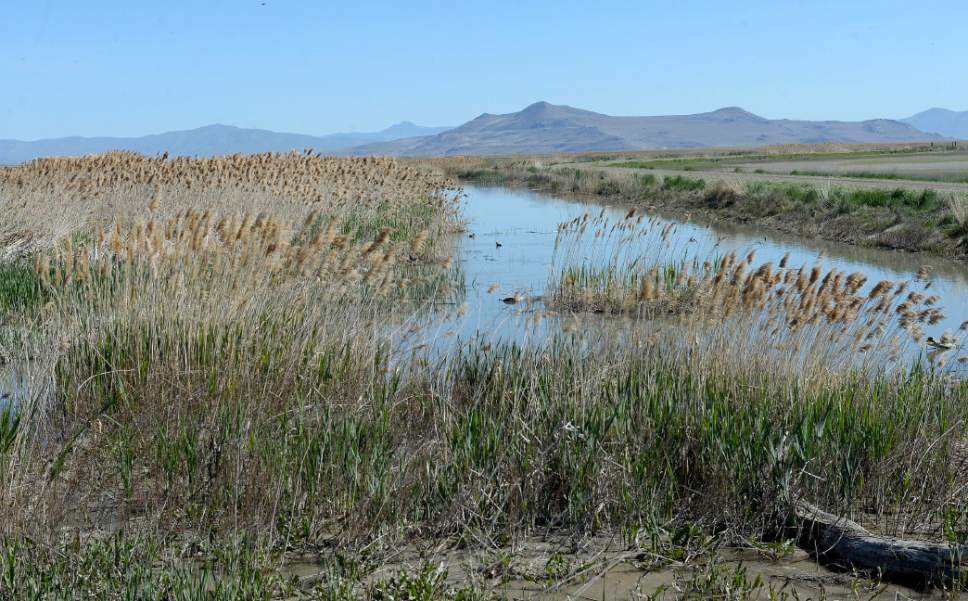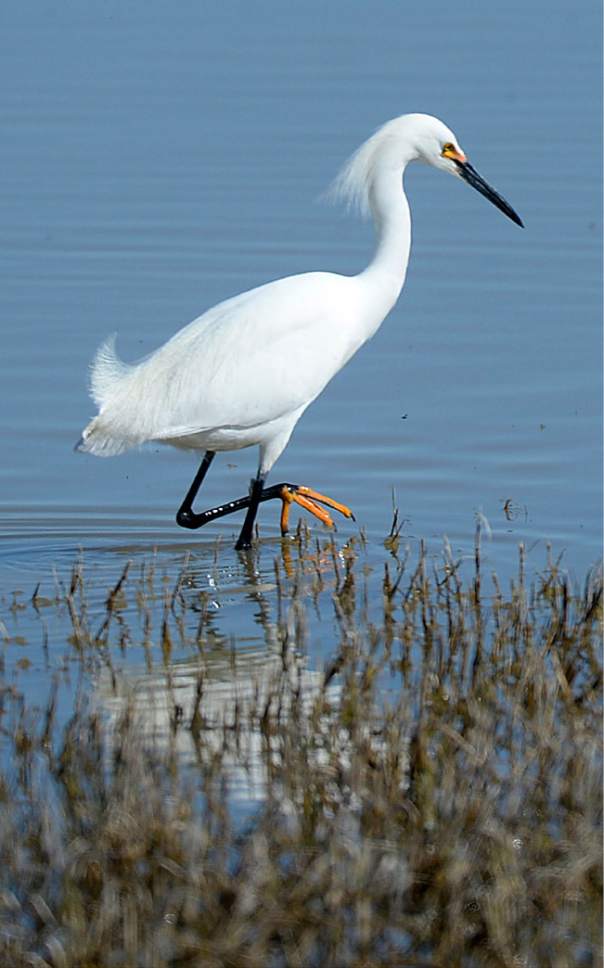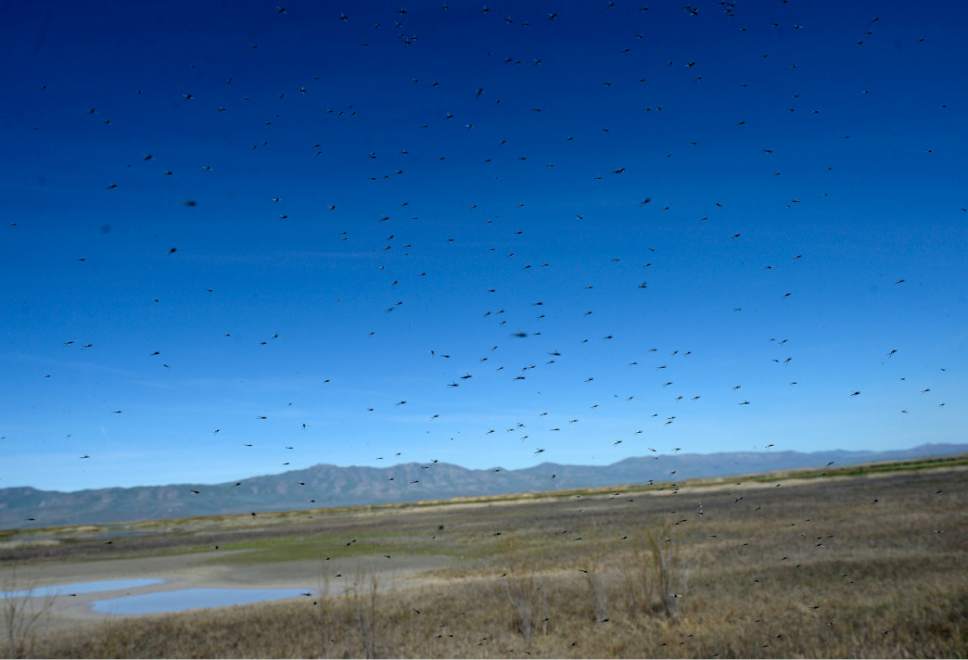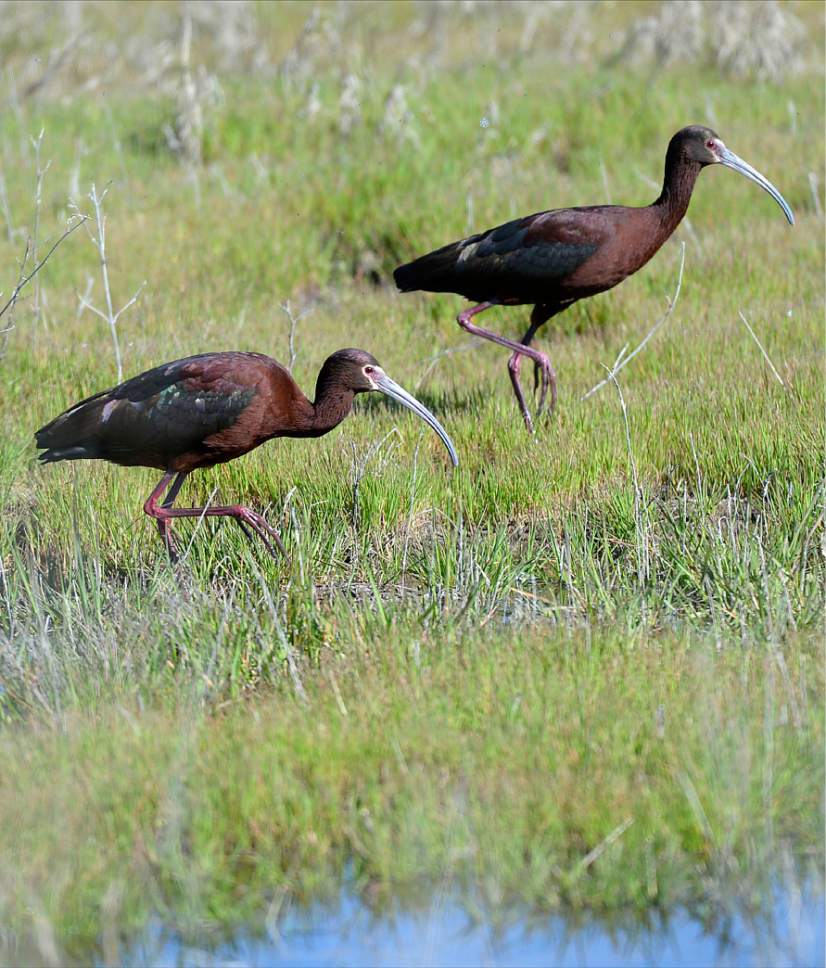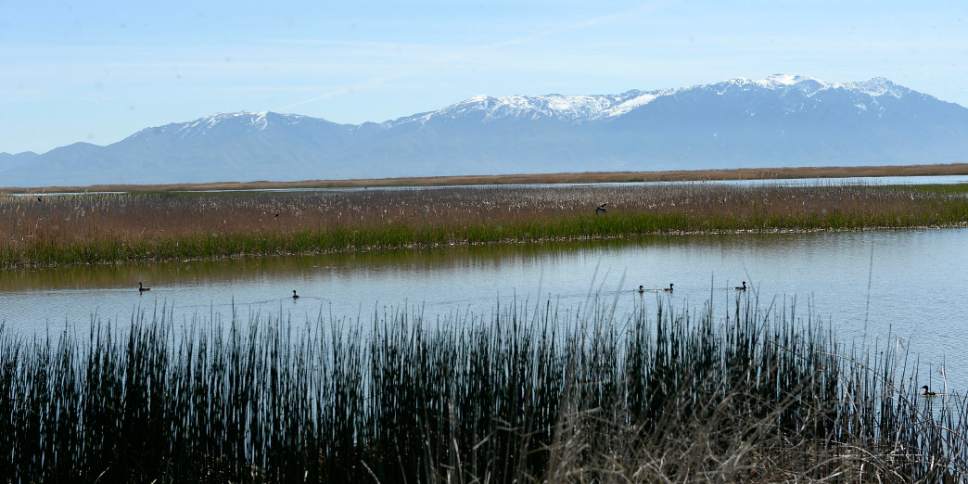This is an archived article that was published on sltrib.com in 2017, and information in the article may be outdated. It is provided only for personal research purposes and may not be reprinted.
The Great Salt Lake marshes and wildlife refuges are places of wonder and beauty, serving the dual purpose as nesting, feeding and resting areas for millions of birds and as destinations for nature lovers.
Those two purposes don't always go hand in hand. Access to places such as Farmington Bay, Bear River, Ogden Bay and Salt Creek can be limited in order to protect the young birds.
Yet there are almost always places to be found to view wildlife — by foot or car — that reveal the wonders of the Great Salt Lake.
And with the marsh system now receiving more water than in recent years, conditions should be even better for birds and bird-watchers.
What to look out for
Those who venture out — and Farmington Bay manager Jason Jones said about 100,000 people visit his area every year — need to follow the rules.
"This is a safe haven for wildlife," said Jones. "Even the staff does not go behind the gates unless we absolutely have to."
One of the reasons is that many nesting birds are on the dikes created to manage water. If the nests are disturbed, eggs or young birds become more vulnerable to predators such as ravens.
Jones said there are many wonders to see throughout the year. There will, for example, be close to a million Wilson's phalaropes using the Great Salt Lake. Watching these birds fly in wavelike formations is a treat.
The Bear River Bird Refuge's Andrea Johnson said May is a time when nearly all of the breeding bird species are present on the refuge. Birds such as double-crested cormorants, great blue herons, mallards, white-faced ibis and California gulls are nesting.
"In late spring and early summer, all the young are out," said Johnson. "You are going to see Western and Clark grebes, avocets, ducklings and goslings."
At Farmington Bay, the heron nests on tall posts visible from the road are great places to see these majestic birds. Having a scope or a good pair of binoculars is helpful.
By the end of May, fuzzy duck broods of mallards, newly hatched American avocets and Canada geese goslings can often be seen at the refuges.
In June, according to Bear River officials, Canada geese undergo a wing molt and are grounded, gathering on the large open-water wetlands of the refuge. The young of black-crowned night herons, great blue herons and snowy egrets have hatched and are being fed by their parents within the nesting colonies.
Also expect to see black-necked stilt, gadwall and ruddy duck broods around mid-June. American white pelicans, one of the largest and easiest-to-spot birds, will be seen in feeding flights. Visitors might even be lucky enough to be treated to the sight of Western and Clark's grebes running across the water as part of their courtship ritual.
And July is the best month to view a variety of young birds.
Planning a visit
There is no charge to visit any of the refuges that follow. Just remember to bring binoculars and mosquito repellent.
Farmington Bay Waterfowl Management Area • This 18,000-acre state-managed reserve near Farmington offers a 1.2-mile hiking trail off Glover Lane, with "blinds" that overlook marshes. Drivers can go to Goose Egg Island, which offers good views of the marsh. The refuge road is open from 8 a.m. to 5 p.m. Dogs are not allowed this time of year. A new nature center is being constructed, but is not available yet. wildlife.utah.gov/habitat/farmington_bay.php
Great Salt Lake Shorelands Preserve • The Nature Conservancy's Great Salt Lake Shorelands Preserve west of Layton is open 7 a.m. to 8 p.m. through September, offering a different kind of experience because the marshes are not as heavily managed. It includes restrooms, a 1-mile boardwalk, outdoor visitor center and 30-foot-high observation tower. nature.org/greatsaltlake
Ogden Bay vicinity • The Division of Wildlife Resources' Phil Douglass said many of the state-managed refuges from Ogden north are closed to walking to protect nesting areas, but there are some exceptions.
He said Ogden Bay is the only refuge that allows dogs on a leash. Walk on the dike from the parking lot that is accessed from 7500 West in Hooper. Canoeing and kayaking are also allowed just east of the main dike. This is the only waterfowl area where fishing is allowed, also just north of that Hooper parking lot. wildlife.utah.gov/waterfowl/forecasts/ogden_bay.php
Salt Creek Waterfowl Management Area • Farther north, Douglass said there is good birding at a Salt Creek Waterfowl Management Area spot called Compton's Knoll. Travel west from Corinne on state route 83 to 6800 West, the Iowa String Road. Then go north to 6800 North and turn west. There is a burrowing owl nest on the south side of the Knoll. There are also two viewing blinds at Compton's Knoll popular with birders and photographers that are open to public use. wildlife.utah.gov/waterfowl/wma_maps/salt_creek_color.pdf
Bear River Migratory Bird Refuge • The federal Bear River refuge offers the best visitor center. It can be seen from Interstate 15 west of the freeway and accessed by going west on Forest Street at the second Brigham City exit.
There is a boardwalk over marshes west of the visitor center. The visitor center itself has kid-friendly exhibits, a small store and area to watch films. It is open Tuesday through Friday from 8 a.m. to 5 p.m. and Saturday from 10 a.m. to 4 p.m.
Perhaps the best way to see Bear River, though, is to drive the 12-mile one-way auto loop further west. It offers great places to see birds and numerous turnoffs with interpretive signs. The drive is open from sunrise to sunset daily, unless weather conditions or flooding force closure. http://www.fws.gov/refuge/bear_river_migratory_bird_refuge
Twitter: @tribtomwharton








